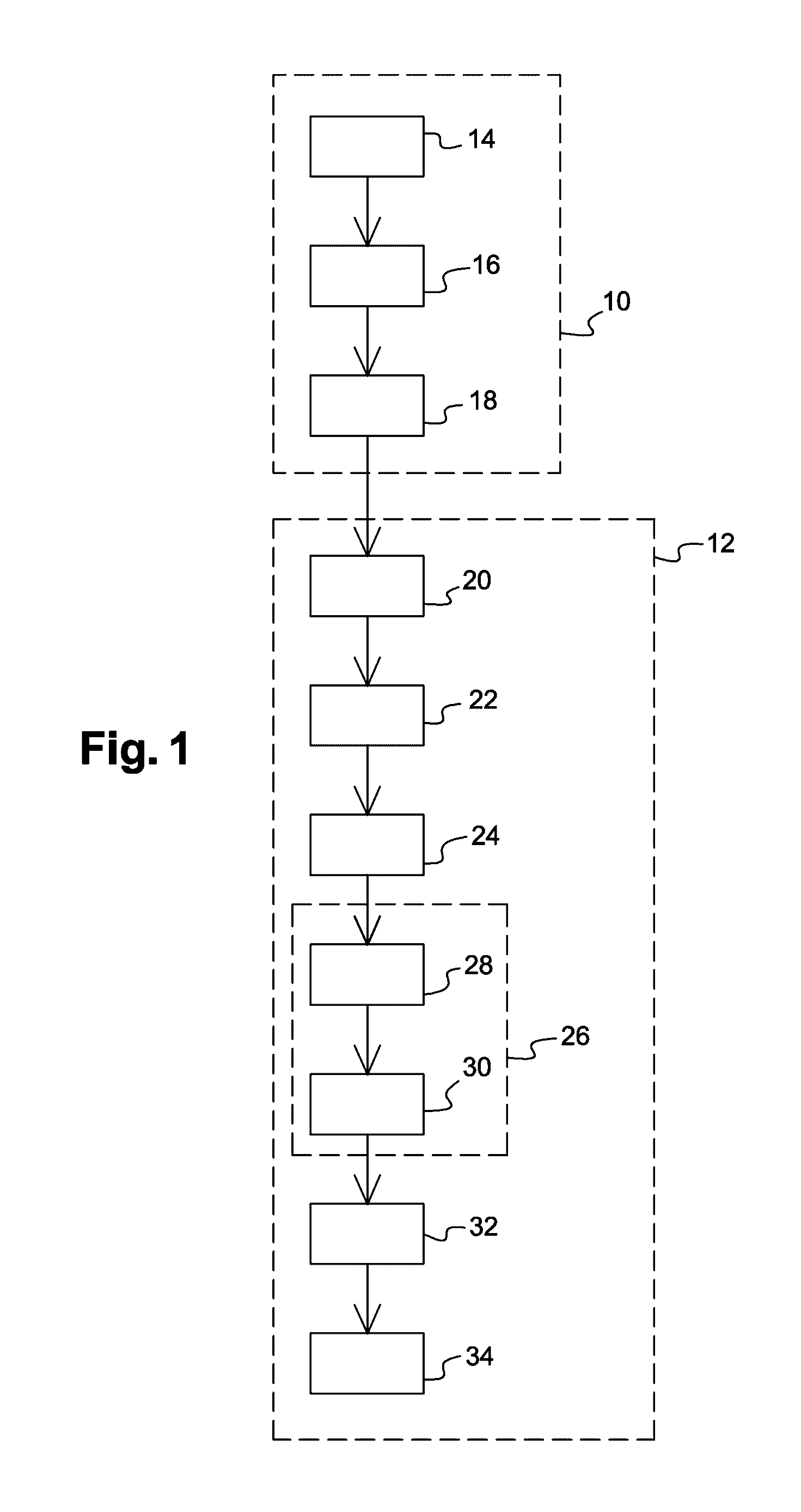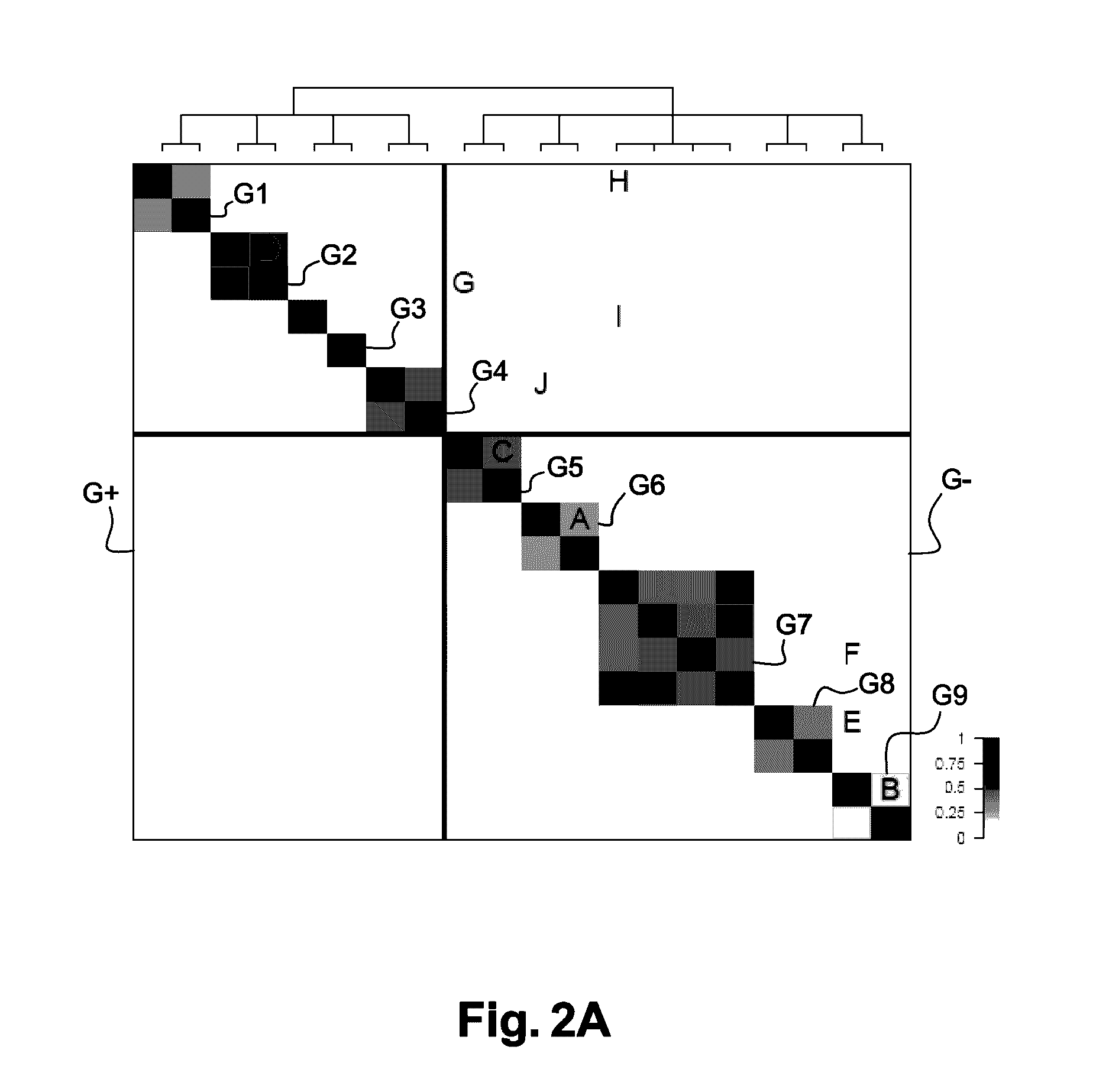Method and device for analysing a biological sample
- Summary
- Abstract
- Description
- Claims
- Application Information
AI Technical Summary
Benefits of technology
Problems solved by technology
Method used
Image
Examples
Embodiment Construction
[0098]An embodiment of the invention applied to the MALDI-TOF (“Matrix-assisted laser desorption / ionization time of flight”) mass spectrometry and for a single taxonomic level, that is, the species level, will now be described in relation with the flowchart of FIG. 1. MALDI-TOF mass spectrometry is well known per se and will not be described in further detail hereafter. Reference may for example be made to Jackson O. Lay's document, “Maldi-tof spectrometry of bacteria”, Mass Spectrometry Reviews, 2001, 20, 172-194.
[0099]The method starts with a step 10 of construction of a set {Pj}={P1 P2 . . . PK} of K reference intensity vectors Pj, each associated with a previously identified microorganism reference species yj, and carries on with a step 12 of analyzing a biological sample for which it is desired to know whether it comprises one or a plurality of different reference species and / or for which the reference species that it is likely to contain are desired to be identified and / or for...
PUM
 Login to View More
Login to View More Abstract
Description
Claims
Application Information
 Login to View More
Login to View More - R&D
- Intellectual Property
- Life Sciences
- Materials
- Tech Scout
- Unparalleled Data Quality
- Higher Quality Content
- 60% Fewer Hallucinations
Browse by: Latest US Patents, China's latest patents, Technical Efficacy Thesaurus, Application Domain, Technology Topic, Popular Technical Reports.
© 2025 PatSnap. All rights reserved.Legal|Privacy policy|Modern Slavery Act Transparency Statement|Sitemap|About US| Contact US: help@patsnap.com



